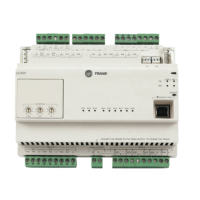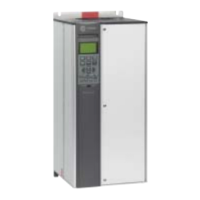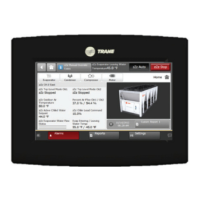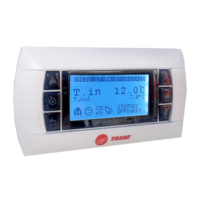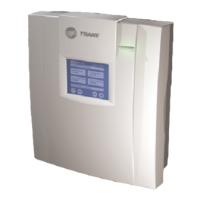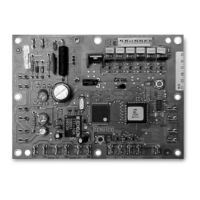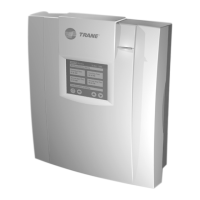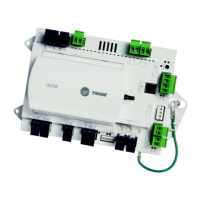Digital Inputs, 5-1* continued
All = Terminals 18, 19, 27, 29, 32, 33, X30/2, X30/3, X30/4. X30/ are the terminals on MCB 101.
Functions dedicated to only one digital input are stated in the associated parameter.
All digital inputs can be programmed to these functions:
[0] No operation No reaction to signals transmitted to terminal.
[1] Reset Resets frequency converter after a TRIP/ALARM. Not all alarms can be
reset.
[2] Coast inverse Leaves motor in free mode. Logic ‘0’ => coasting stop.
(Default Digital input 27): Coasting stop, inverted input (NC).
[3] Coast and reset inverse Reset and coasting stop Inverted input (NC).
Leaves motor in free mode and resets the frequency converter. Logic ‘0’
=> coasting stop and reset.
[5] DC-brake inverse Inverted input for DC braking (NC).
Stops motor by energizing it with a DC current for a certain time period.
See par.2-01
DC Brake Current to par.2-03 DC Brake Cut In Speed
[RPM]. The function is only active when the value in par.2-02 DC Braking
Time is different from 0. Logic ’0’ => DC braking.
[6] Stop inverse Stop Inverted function. Generates a stop function when the selected ter-
minal goes from logical level ‘1’ to ‘0’. The stop is performed according
to the selected ramp time (par.3-42
Ramp 1 Ramp Down Time, par.
3-52
Ramp 2 Ramp down Time, par.3-62 Ramp 3 Ramp down Time, par.
3-72
Ramp 4 Ramp Down Time).
NOTE: When the frequency converter is at the torque limit and has re-
ceived a stop command, it may not stop by itself. To ensure that the
frequency converter stops, configure a digital output to
Torque limit &
stop
[27] and connect this digital output to a digital input that is config-
ured as coast.
[7] External Interlock Same function as Coasting stop, inverse, but External Interlock generates
the alarm message ’external fault’ on the display when the terminal
which is programmed for Coast Inverse is logic ‘0’. The alarm message
will also be active via digital outputs and relay outputs, if programmed
for External Interlock. The alarm can be reset using a digital input or the
[RESET] key if the cause for the External Interlock has been removed. A
delay can be programmed in par.22-00
External Interlock Delay, External
Interlock Time. After applying a signal to the input, the reaction described
above will be delayed with the time set in par.22-00
External Interlock
Delay.
[8] Start Select start for a start/stop command. Logic ‘1’ = start, logic ‘0’ = stop.
(Default Digital input 18)
[9] Latched start Motor starts, if a pulse is applied for min. 2 ms. Motor stops when Stop
inverse is activated
[10] Reversing Changes direction of motor shaft rotation. Select Logic ‘1’ to reverse. The
reversing signal only changes the direction of rotation. It does not acti-
vate the start function. Select both directions in par.4-10
Motor Speed
Direction.
(Default Digital input 19).
[11] Start reversing Used for start/stop and for reversing on the same wire. Signals on start
are not allowed at the same time.
[14] Jog Used for activating jog speed. See par.3-11
Jog Speed [Hz].
(Default Digital input 29)
Parameter Description
90 TR200 Programming Guide

